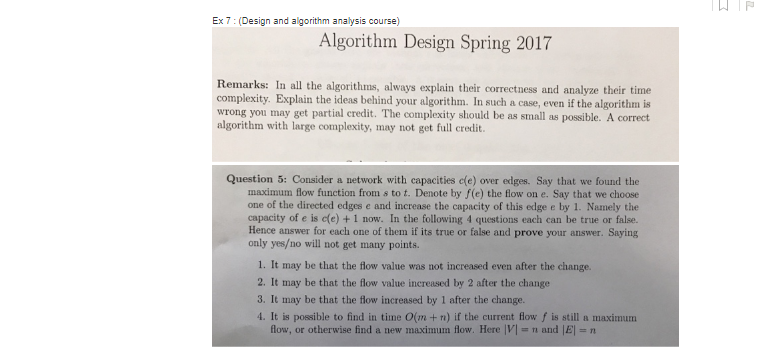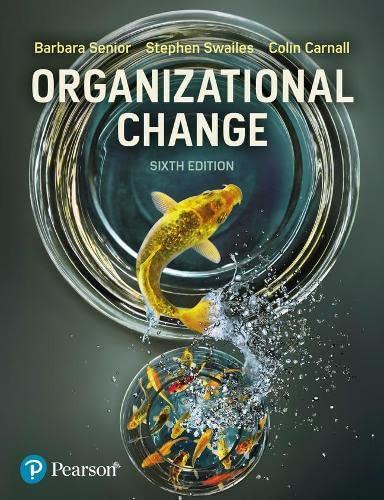Question
Ponder the intuitive item you are planning: depict what you need it to accomplish for you. Compose a rundown of practical and non-utilitarian necessities. [4
Ponder the intuitive item you are planning: depict what you need
it to accomplish for you. Compose a rundown of practical and non-utilitarian necessities.
[4 marks]
(b) Sketch out an underlying low-loyalty model for the watch and create in any event
two particular options that both meet your arrangement of necessities recorded previously.
[8 marks]
(c) Nielsen's heuristics utilized for Heuristic Evaluation are: (1) perceivability of framework
status, (2) match among framework and genuine world, (3) client control and opportunity,
(4) consistency and principles, (5) blunder counteraction, (6) acknowledgment as opposed to
review, (7) adaptability and proficiency of purpose, (8) tasteful and moderate plan, (9)
help clients perceive and recuperate from mistakes, and (10) help and documentation.
Assess the two low-constancy models utilizing Heuristic Evaluation.
A climate application, whose principle screen is displayed in the figure above, has been made
explicitly for occasion coordinators as essential partners.
(a) Evaluate the gave low-loyalty model utilizing Cognitive Walkthrough and
the pictured screens (in the event that you want to, you might concoct your own
suppositions in regards to the essential partners), for the accompanying errands:
(I) (beginning from the primary screen) View subtleties of the occasion called Field Day
(ii) (beginning from the principle screen) Add another occasion
[proceeded . . . ]
8
CST0+CST1.2021.3.9
(iii) (beginning from the principle screen) View definite weather conditions figure for Field
Day
(iv) (beginning from the fundamental screen) Change the units of estimation for the
temperature data gave
(v) (beginning from the fundamental screen) Modify the volume setting to 150
[14 marks]
(b) Using the result of the CW you have directed above, give a rundown of
ideas for re-planning this climate application. [3 marks]
(c) Considering that client focused plan is iterative, how might you go about
gathering one more round of information from the objective client bunch utilizing your discoveries
from the CW? Make sense of which information gathering procedures you would utilize and why.
[3 marks]
9
CST0+CST1.2021.3.10
Area D
7 Machine Learning and Real-world Data
Consider the coordinated chart displayed in the figure underneath, which communicates collaboration
among people (A, B, . . . , H) in a fishing town. The significance of an edge from
X to Y is that X has asked Y for guidance or help during fishing somewhere around once.
A
E
C
D
F G H
B
(a) Consider the betweenness centrality of every person in this organization, which is
recorded in the accompanying table.
A B C D E F G H
6 12 2 9 0 12 8 0
(I) Give a meaning of the betweenness centrality of a hub. [1 mark]
(ii) Explain naturally why B and F have the most noteworthy betweenness centralities
furthermore, why E and H have betweenness centralities of 0. [2 marks]
(b) We presently see what occurs on the off chance that the organization is changed over into an undirected
network.
(I) What is the width of this organization and why? Your inquiry ought to
incorporate a meaning of distance across.
A Java software engineer is endeavoring to compose a class BigNo which is expected to deal with
whole numbers of inconsistent size. A number is addressed as a rundown of single digits organized
with the goal that the most un-huge digit is at the top of the rundown. In frame, class BigNo
is announced hence:
class BigNo
{ private int dig;
private BigNo rest;
public BigNo(int n)
{ this.dig = n%10;
in the event that (n/10 == 0)
this.rest = invalid;
else
this.rest = new BigNo(n/10);
}
private BigNo add(int c)
.
public BigNo add(BigNo that)
.
private BigNo add(BigNo that, int c)
{ on the off chance that (this.rest == invalid)
return that.add(this.dig+c);
if (that.rest == invalid)
return this.add(that.dig+c);
int d = this.dig + that.dig + c;
return new BigNo(d%10, this.rest.add(that.rest,d/10));
}
The last return articulation alludes to a constructor which isn't shown. For what reason are
two constructors required? Give the missing constructor. Does it need to be
public? [4 marks]
For what reason are there three add() strategies? Make sense of why one is public and two are
private. Give bodies to the two add() strategies for which just heading lines
are shown. [6 marks]
Give an appropriate toString() strategy. [4 marks]
Assume jack and jill are BigNo portrayals of the numbers 46 and 57
separately. Depict cautiously the impact of the call jack.add(jill) [6 marks]
2
CST.2000.10.3
3 Further Java
Compose brief notes on the offices for lightweight simultaneousness in Java. You ought to
cover the accompanying subjects, utilizing code parts to show your response:
(a) making a string
(b) shared avoidance
(c) flagging
(d) nonconcurrent interference
(e) overseeing need


1. Consider the following recurrent algorithm complexity. Note that the Master Algorithm cannot be applied directly as it is not in the T(n) = aT () + f(n) format. T(n) = 2T () + 2T () + n (a) Use the Master Algorithm to find the complexity of the lower bound T(n)- 4T + n (b) Use the Master Algorithm to find the complexity of the upper bound Tu(n) 4Tu ( + n (c) Do the lower and upper bound complexities agree? If f(n)=n, would your lower and upper bound complexities agree? (d) Using only the results from (a) and (b), find the tightest complexity values (use Big O, little o, Big 2, or little oo) based on each result (a) and (b).
Step by Step Solution
There are 3 Steps involved in it
Step: 1

Get Instant Access to Expert-Tailored Solutions
See step-by-step solutions with expert insights and AI powered tools for academic success
Step: 2

Step: 3

Ace Your Homework with AI
Get the answers you need in no time with our AI-driven, step-by-step assistance
Get Started


